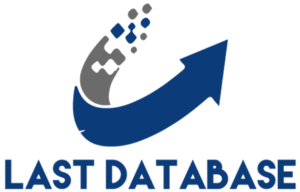Even for international organizations with offices all over the world, English is the way the majority of employees communicate with each other, at least officially.
This only makes sense, because it streamlines communication and it is the best way to avoid misunderstandings that can happen during translation.
Your Team Needs A Shared Sales Language
But what about a shared sales language? In a consultative sales environment, the language we use is key to the success of an organization.
Unfortunately, many companies don’t share a common language overseas data when it comes to sales as well as in operations.
As you can imagine, this can lead to confusion and sometimes to mismanaged expectations. That’s exactly why sales and operations need a common, shared language.
Too many sales leaders use generic terminology when managing their people. They talk about opportunities, leads, closing rates, probabilities and prospecting but they don’t define those terms.
Define Your Terminology
When developing a consultative sales process, the terminology should be defined and agreed upon.
What is an opportunity vs. a lead? Do you have clients or customers?
What are objections and what are stalls? When we talk about decision what features does leadinfo offer? makers, let’s be clear who the economic buyers are, who we define as influencers or coaches and what audiences we view as the end users.
And do these roles change during the course of working for a client, and how can a sales professional effectively influence the decision-maker to mutual gain?
The list goes on and on, but the important point is that whenever your sales manager leads a sales meeting and makes reference, everybody in the room or on the phone should be clear on what she/he is referring to.
Use Parameters to Refine Your Terminology
The best way to manage expectations and develop a shared language is to use parameters to establish a term.
I remember times when I was still an outside sales person and our manager would go around the table, asking each sales person to gauge the probability of closing for each prospect in their pipeline.
Personally, I am a very cautious person when it comes to predicting probability. I am even a bit superstitious and would never predict 100% unless I had a signature.
Some colleagues of mine however were more courageous and daring when it came to their pipeline. For them an 80% closing probability was certain when they had a nice chat with a prospect.
These scenarios happen where there is no common, defined sales language established. For companies to have a firm handle on opportunity management, they need to have a structure in place that will help sales management and sales people to manage their pipeline.
That means that you need to set parameters as to what each percentage means.
For example, 80 % closing probability could mean that you need to have had china data all the decision makers involved, a verbal agreement and proposal that was discussed and agreed upon by all engaged parties.
The remaining 20% that are still up in the air could be circumstances still unknown, such as Purchasing demanding different payment terms.
Be Creative, But Precise
One of my clients wanted to use a sports analogy to manage the pipeline.
They referred to First Base, Second Base, etc. when it came to pipeline management. There is nothing wrong with being humorous and playful as long as everybody involved understands what those terms stand for.
A North American sales manager working with sales professionals from countries where baseball is not a national sport will have people scratching their heads as to what she/he meant.
Every company has a different system set-up and the sales cycle in general will determine the details but what is crucially important is that everybody internally knows what 50% vs. 80% probability means.






